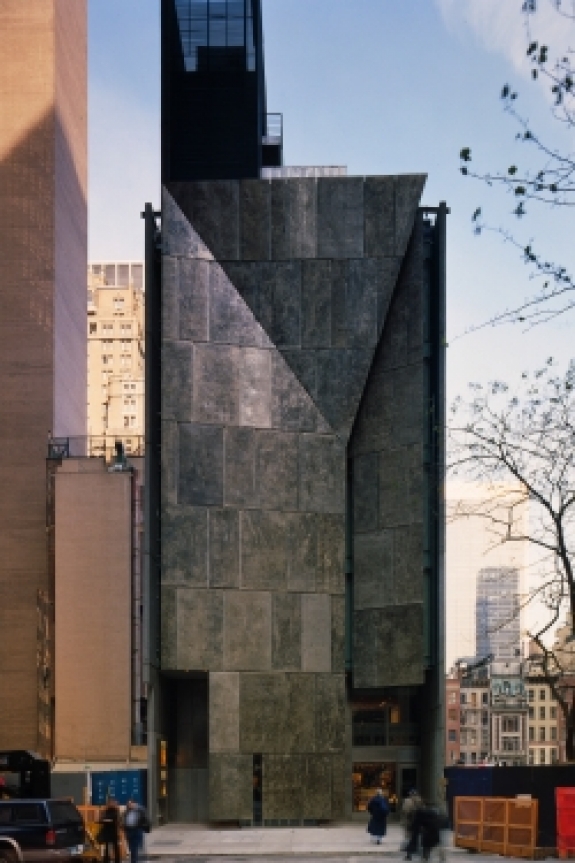Last night, the American Folk Art Museum — that beloved, bedeviled museum on West 53rd Street — confirmed what many of us had feared for years. It is in such deep debt and has such low attendance numbers that it will sell its building and relocate back to a lobby space one sixth its current size near Lincoln Center. Sad as it is to say, this news comes as no surprise, and the culprit is the museum's physical home.
Despite the many rave reviews the 30,000-square-foot building received when it opened in December 2001, it was immediately clear to many that the building was not only ugly and confining, it was also all but useless for showing art — especially art as visionary as this museum's. In the past decade, AFAM has mounted shows of some of the greatest artists of the twentieth century, including Martin Ramirez, Henry Darger, Adolf Wolfli, and Thomas Chambers. Yet from the outside it looked like a bronzed Kleenex box or a miniature suburban professional building. The inside was worse. Dominated by showy staircases of many scales going in different directions, ill-conceived nooks and niches, the galleries were long narrow corridors or landings, sometimes only a few feet wide, making it impossible to see the art. The largest exhibition spaces had the look of a gloomy cloakroom. The architects responsible for this utter lack of imagination and hubristic mess of starchitectural vanity, Tod Williams and Billie Tsien, were praised for their intelligent use of materials. The building was called astonishing, a shrine, a temple, a Zen masterpiece. In reality, every one of their decisions reflected a total lack of feeling for, even a disdain for, art. Before he died, the Times architectural critic Herbert Muschamp, who'd said nice things about the building when it opened, confided to me that my loathing was “probably right.”



